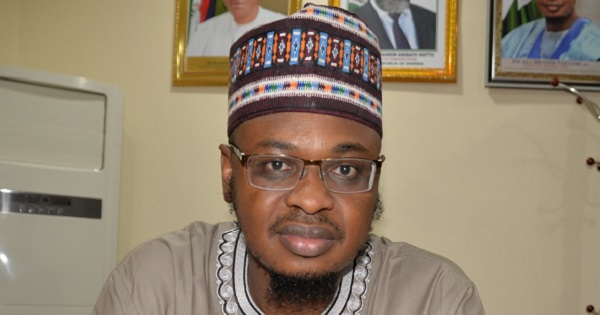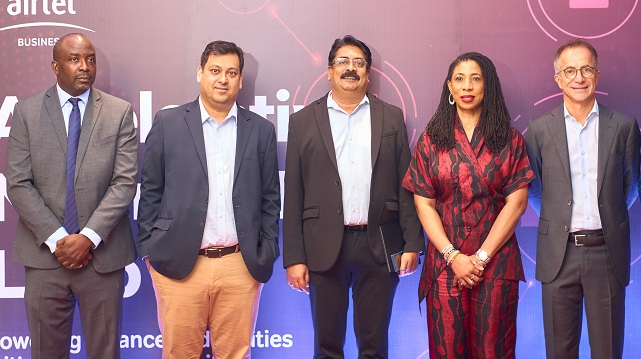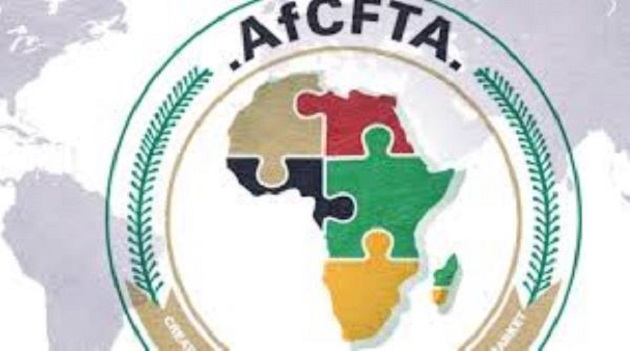General News
Pantami Inaugurates Committee to Increase Broadband Penetration by 2025

Federal Government on Thursday inaugurated a Broadband Implementation Steering Committee (BISC), to accelerate the attainment of the country’s broadband penetration to 70 per cent by 2025.

Dr Isa Pantami
Dr Isa Pantami, minister of Communications and Digital Economy, while inaugurating the committee in Abuja, said the current 40.18 per cent penetration should be raised to improve the contribution of the sector to the nation’s GDP.
“If you look at the contribution of technology to our GDP, what we have achieved in the first quarter of 2020 is unprecedented, the contribution is 14.07 per cent.
“So this is a clear indication that the more there is proper penetration, the more the nation’s GDP will increase.
“Part of the plan is that we are targeting at least 90 per cent of our population in Nigeria to have access to broadband, so we are targeting 70 per cent penetration by 2025,” he said.
The minister said before now, the broadband penetration was 31 per cent but based on the recent report released by the NCC, the broadband penetration had now increased to 40.18 per cent.
According to him, it represents almost 10 per cent penetration in less than a year.
He explained that the new Broadband Plan, 2020-2025, was designed to deliver data download speeds across Nigeria at a minimum of 25Mbps in urban areas, and 10Mbps in rural areas.
Pantami said the aim was to ensure effective coverage of at least 90 per cent of the population by 2025 at a price not more than N390:00 per 1GB of data (i.e. two per cent of median income or one per cent of minimum wage).
According to the minister, the plan is being tailored in line with the pledge by President Muhammadu Buhari to lift 100 million Nigerians out of poverty in 10 years.
“The plan will accelerate the aspiration of the country, as it leap frogs with the rest of the developed world toward the widespread deployment of 5G technologies, even while it is yet to achieve significant 4G coverage and adoption.
“With the 14.7 per cent contribution to the nation’s GDP, Nigerian government believes that rapid rollout of broadband services will address various socio-economic challenges faced by the country.
“Some of the challenges include: to grow its economy, create jobs, rapidly expand the tax base, and improve digital literacy and educational standards,” he said
He added that the current plan was to ensure the deployment of nationwide fibre coverage to reach all state capitals and a point of presence in at least 90 per cent of local government headquarters.
According to him, it also targeted to reach tertiary institutions, major hospitals in each state and 60 per cent of base stations by 2025 at statutory rates of N145 per meter for Right of Way (RoW).
He said that the ministry’s engagement with the Nigeria Governors’ Forum had inspired several state governments to adopt the N145 per meter and a few of these states had waived the fee altogether.
“President Buhari has also directed the security agencies to protect all critical national infrastructure,” he said
On jobs creation, Pantami said that the fibre to the Home Council Europe, a 25 million EUR investment in information and communications technology, including smart grid and broadband, would create or retain 700,000 jobs.
The minister noted that out of the figure 360,000 would be small business jobs.
He said that higher standard of living and socio-economic development had caused the growth of e-health, e-education and e-government, among others.
He, however, mandated the committee to ensure effective monitoring and implementation of the plan.
“You are expected to adopt the Broadband Plan as your working manual; you should become very familiar with the 100-page document.
“I believe that a combination of the knowledge of its content and your subject matter expertise will enable you to provide a catalyst for innovative solutions to the implementation of the Plan.
“I often state that no Policy or Plan can implement itself.
“As such, it is critical to ensure that an adequate level of monitoring and feedback are integrated into your activities,” he said.
In his remarks, Prof Umar Danbatta, executive vice chairman (EVC), Nigerian Communications Commission (NCC), thanked the Minister for putting the committee together and urged it to work in synergy with other related agencies.
Mr Ubale Maska, chairman of the Committee, who is also the Executive Commissioner, Technical Services, NCC, explained that broadband was the centre of any digital economy of a country.
“We are humbled to be members of the implementation committee responsible for steering the National Broadband Plan (NBBP).
“We express our commitment to bring to bear our wealth of experience for the successful implementation of the plan,” he said.
Other dignitaries at the occasion includes Mr Kashifu Inuwa, director general of National Information Technology Development Agency (NITDA), Prof. Mohammed Abubakar, managing director of Galaxy Backbone.
General News
EFCC Says Corrupt Politicians are Using Crypto Wallets to Launder Money

Ola Olukoyede, chairman, Economic and Financial Crimes Commission (EFCC), has raised the alarm that some corrupt Nigerian politicians are now hiding their illicit wealth in cryptocurrencies to evade scrutiny and detection by anti-graft agencies.

Ola Olukoyede, chairman, EFCC
The EFCC boss said the agency had uncovered a growing trend where fraudulent public officials now used cryptocurrency wallets to stash stolen public funds and conduct illicit transactions.
Olukoyede made the revelation at an event commemorating Africa Anti-Corruption Day.
The event was held simultaneously in Abuja, Lagos and Ibadan, Oyo State.
Other speakers at the event lamented that Nigerians usually fell victim to crypto fraud, including the recent CBEX scam, where Nigerians lost over N1.3tn.
Olukoyede said, “Virtual asset fraud is on the rise. Our findings show that fraudulent politicians are already perfecting schemes and hiding their loot in cryptocurrencies to beat the investigative blackness of anti-corruption agencies.
“Stolen funds and unexplained wealth are being warehoused in wallets and payment for services are being done through this window,” he said.
Olukoyede warned that while the rise of virtual assets had transformed financial transactions globally, it had also created new avenues for money laundering and financial crimes.
He said, “Technology is moving at a supersonic speed around the world.
“The advent of virtual assets is a response to one of the qualities of money as a store of value like it is known in our elementary economies.”
“However, as with every progressive innovation, fraud starts to usually evolve, evolve ways of perverting their genuine purposes,” he said.
He added that the EFCC was not helpless in the face of the sophisticated schemes, noting that proactive training and intelligence sharing had enabled the commission to identify and investigate such cases.
General News
Airtel Nigeria Drives BFSI and Utility Sector Innovation with Industry-wide Workshop

Airtel Nigeria, telecommunications and digital solutions provider, has reemphasised its commitment to national development with a two-day workshop for companies in Nigeria’s Banking, Financial Services & Insurance (BFSI) and utility sectors.

Held from July 8 to 9, 2025 at the Lagos Continental, the exclusive event brought together C-suite executives and industry thought leaders to co-create transformative and tech-driven solutions for these critical industries.
Themed “Banking on Innovation: Powering Financial Services with Connectivity” on 1 and “Accelerating Nigeria’s Digital Leap: Smarter Networks, Smarter Business” on Day 2, the sessions were designed to identify critical pain points, unlock business potential, and drive smarter, more connected operations across two of the nation’s most essential sectors.
Delivering the keynote address, Dinesh Balsingh, Managing Director/CEO of Airtel Nigeria, reaffirmed Airtel’s dedication to enabling and driving Nigeria’s digital transformation across the finance and energy sectors.
Speaking on the timeliness of the workshop, Airtel Nigeria’s Managing Director and Chief Executive Officer, Dinesh Balsingh said, “From power and water to finance, transportation, and logistics, this is a defining moment for every sector. The real question isn’t whether to adopt digital solutions, but how quickly and intelligently we can do so. At Airtel Nigeria, we’re moving beyond basic connectivity and becoming a true digital partner to the industries we serve.”
He highlighted Airtel’s categories of enterprise solutions that has been created to improve quality of life. These groupings include Internet of Things (IoT) for such services as smart metering, leak detection, energy optimisation, and real-time asset tracking; Communications Platform as a Service (CPaaS), which enables secure, multi-channel customer engagement via SMS, WhatsApp, Voice, and USSD; as well asl Network as a Service (NaaS), which delivers flexible, secure connectivity with cloud-ready agility.
Mr. Balsingh added that, “Nigeria’s power and energy industries are under growing pressure to modernise. Legacy infrastructure, fragmented systems, and lack of real-time visibility are major obstacles. Airtel is stepping in with the right tools, not just to connect, but to transform. With IoT, CPaaS, and NaaS, we’re laying the groundwork for smarter operations, improved service delivery, and better outcomes for businesses and consumers alike.”
Abhishek Biswal, Chief Business Officer, Digital Services at Airtel India, brought substantial insight to the discourse with a demonstration of Airtel’s IoT Hub and its transformative impact on energy distribution.
Biswal said, “The future of finance and energy is digital, and that future must be secure, scalable, and seamless. When financial players and utility providers partner with telcos like Airtel, we’re not just connecting systems; we’re building a smarter digital ecosystem for everyone.”
Reinforcing the CEO’s position, Ogo Ofomata, Director, Airtel Business, called for collaboration among the participating sector and their stakeholders.
“We don’t take lightly the trust you have put in us. Airtel operates in what we call the enabler industry. Sometimes we don’t even know there’s a problem until we come together like this. This workshop is about understanding your needs and working side by side to design solutions that truly fit,” she said.
In his remarks, Luc Serviant, Group Enterprise Business Director at Airtel Africa, highlighted the company’s role in driving digital transformation through sustained investments in 5G and LEO satellite connectivity, aimed at boosting remote operations and expanding access in underserved regions across the finance and energy sectors.
He said, “At Airtel, we understand that the future of is going digital, and reliable connectivity is the backbone of that future. From 5G to LEO satellite integration, we are investing in intelligent infrastructure that empowers service providers to operate more efficiently, respond in real-time, and deliver uninterrupted services to millions of Nigerians. This isn’t just about innovation; it’s about building the digital foundation that will power the nation’s next chapter.”
This workshop, which continues the series of sectoral engagements within Nigeria’s growing economy, concluded with feedback from stakeholders who called for the inclusion of regulatory bodies such as the Nigerian Communications Commission (NCC) in future editions.
General News
AfCFTA Credit Fund Makes First Investment With $10m Loan

The Credit Fund of the AfCFTA Adjustment Fund has successfully closed its first investment, committing $10 million to Telecel Global Services Ltd, through a senior secured amortising loan.

The transaction marks a significant milestone in the operationalisation of the Fund. The Credit Fund is one of three Funds under the AfCFTA Adjustment Fund, established by the AfCFTA Secretariat and African Export-Import Bank (Afreximbank) to provide targeted transitional support to AfCFTA State Parties and private sector entities as they adjust to the requirements and opportunities presented by the AfCFTA Agreement.
Telecel Global Services, a subsidiary of the Mauritius based Telecel Group, provides wholesale voice and SMS services and enterprise connectivity solutions to more than 250 telecoms operators across Africa and globally.
With digital connectivity being at the heart of the trade and economic integration and success of the AfCFTA, this facility will support Telecel’s expansion in Ghana and Liberia, strengthen its infrastructure, and contribute to bridging Africa’s digital divide through enhanced connectivity and digital inclusion.
By investing in digital infrastructure in underserved markets, the Fund is helping reduce trade barriers, foster cross-boarder productivity and accelerate inclusive industrialization. Mr. Jean-Louis Ekra, Chairman of the Board of the AfCFTA Adjustment Fund Corporation, stated: “
The closing of our first deal marks a historic milestone for the Credit Fund and the broader vision of the AfCFTA.
This US$10 million investment in Telecel Global Services is a clear demonstration of how targeted capital can drive meaningful impact—accelerating digital connectivity, enabling intraAfrican trade, and supporting private sector-led development in priority sectors.
It is our commitment to ensure that such investments continue to bridge critical gaps, stimulate economic resilience, and unlock Africa’s vast potential.”
H.E. Wamkele Mene, Secretary-General of the AfCFTA Secretariat, noted: “This transaction demonstrates how the AfCFTA Adjustment Fund is beginning to serve its intended purpose – supporting State Parties and the private sector as we work to make this Agreement commercially meaningful.
By investing in digital infrastructure, we are addressing some of the most critical enablers of trade facilitation, industrialisation, and regional value chain development.”
Prof. Benedict Oramah, President and Chairman of the Board of Directors of Afreximbank, added: “Today, we make another bold statement of our unwavering intent to ensure that Africans reap the benefits of the African Continental Free Trade Agreement.
We are proud to have commenced the operationalisation of the Credit Fund. With this Fund, we will provide vital support to African corporates, helping them retool and expand their operations necessary to capitalise on the AfCFTA opportunities.
The investment strengthens a critical enabler, the digital economy and regional connectivity, while reinforcing our long-term commitment to transforming the structure of the African economy.”
Marlene Ngoyi, CEO, FEDA, the Fund Manager of the AfCFTA Adjustment Fund, said: “This investment exemplifies the strategic intent of the Credit Fund – to catalyse growth and resilience in sectors that are vital for Africa’s structural transformation.
We are proud to partner with Telecel, whose operations directly advance intra-African connectivity and digital trade.”
The Credit Fund will continue to prioritise commercially viable investments that enable trade, support diversification, and promote inclusive growth in line with the broader AfCFTA implementation agenda.

 Telecom3 days ago
Telecom3 days agoNCC Speaks of Plans to Secure Telecom Infrastructure Nationwide

 General News3 days ago
General News3 days agoAirtel Nigeria Drives BFSI and Utility Sector Innovation with Industry-wide Workshop

 Telecom3 days ago
Telecom3 days agoAfrica’s Lawmakers Commit to Strengthening AI, Digital Health and Smart Manufacturing Frameworks

 E-Financial3 days ago
E-Financial3 days agoUBA Expands to More African Cities, Stamps Footprint in Saudi Arabia

 General News3 days ago
General News3 days agoEFCC Says Corrupt Politicians are Using Crypto Wallets to Launder Money

 E-Financial3 days ago
E-Financial3 days agoEcobank Plans to Raise $250m Capital Through Private Placement

 News3 days ago
News3 days agoIHS Nigeria, UNICEF Donate Oxygen Plant to Bridge Health Gap in River State

 Telecom3 days ago
Telecom3 days agoNITDA DG: AI Is an Ally for Innovation, Not an Enemy



















